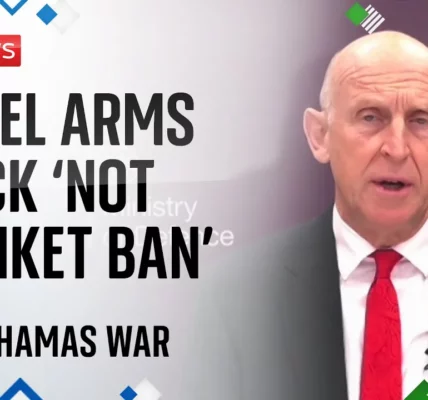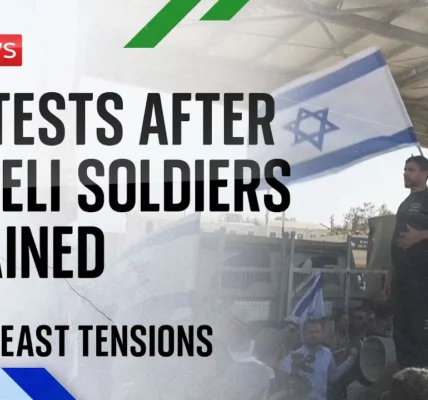Iran’s Potential Retaliatory Strikes Against Israel: An In-Depth Analysis

This article delves into the anticipated military actions by Iran against Israel, focusing on the capabilities of the Islamic Revolutionary Guard Corps (IRGC), the implications of these actions for regional stability, and the broader context of military and political dynamics in the Middle East.
Introduction
The current geopolitical climate in the Middle East is increasingly tense, with Iran poised to execute retaliatory strikes against Israel. This situation raises questions about the potential consequences of such actions, particularly if they escalate into an all-out war. Central to this analysis is the role of the Islamic Revolutionary Guard Corps (IRGC), which serves as a vital instrument of Iran’s military strategy and influence in the region.
The Islamic Revolutionary Guard Corps (IRGC)
The IRGC, established in the aftermath of the 1979 Iranian Revolution, is a dominant force within Iran’s military structure. Its primary mission is to protect the Islamic Republic and expand its influence throughout the Middle East.
Structure and Influence
The IRGC is not just a military organization; it is a political entity that answers directly to Iran’s Supreme Leader, Ayatollah Ali Khamenei. This close relationship amplifies its power and influence within Iran, making it a key player in both domestic and foreign policy.
Military Capabilities
With an estimated strength of around 25,000 personnel, the IRGC boasts a diverse range of military capabilities, including:
- Ground forces
- Naval units
- Air units
- Intelligence operations
Some analysts suggest that the actual size of the IRGC could be even larger, reflecting its extensive reach across various military domains.
Missile Arsenal
The IRGC’s missile capabilities are particularly noteworthy. Key missiles in their arsenal include:
- Sejjil: Capable of speeds over 10,500 miles per hour with a range of approximately 1,500 miles.
- Shahab 1: A short-range ballistic missile with an estimated range of 190 miles.
- Hypersonic Missiles: Introduced in 2023, these missiles can travel at speeds exceeding five times the speed of sound and follow complex trajectories, making them difficult to intercept.
Iran views these ballistic missiles as crucial deterrents against potential threats from Israel and the United States.
Nuclear Aspirations and International Relations
While Iran has consistently denied ambitions to develop nuclear weapons, its uranium enrichment program has raised significant concerns among Western nations. In 2023, Iran’s enriched uranium levels were reported to be 21 times above the limits previously imposed.
Supreme Leader’s Stance
Ayatollah Khamenei has made it clear that Iran will not be deterred from its nuclear ambitions, stating that a deal with Western nations is only feasible if Iran’s nuclear infrastructure remains intact.
Axis of Resistance
Through the IRGC, Iran has fostered an “axis of resistance” composed of various militant groups, including:
- Hezbollah: Based in Lebanon, it is often regarded as more powerful than the Lebanese national army.
- Hamas: Operating in the Gaza Strip, it maintains significant ties with Iran.
- Houthi Movement: Active in Yemen, they assert independence from Iranian influence, despite their collaborative ties.
The Implications of Military Action Against Israel
Engaging in military conflict with Israel presents both risks and opportunities for Iran. The decision to retaliate will weigh heavily on the IRGC and Iran’s leadership, who must consider the potential fallout.
Risks of Escalation
Going to war with Israel could jeopardize the future of Iran’s allied militant groups, potentially destabilizing the “ring of fire” that Iran has built around Israel.
Perceptions of Weakness
However, failing to retaliate may also create a perception of weakness, which could embolden both Israel and the United States. Iran’s leadership may feel pressure to act decisively to maintain their image.
Conclusion
The potential for Iranian retaliatory strikes against Israel is a complex issue that encompasses military capabilities, geopolitical strategies, and the delicate balance of power in the Middle East. As tensions continue to rise, it is crucial for observers to understand the motivations and implications of such actions. To stay informed on this evolving situation, we encourage readers to explore more articles related to Middle Eastern geopolitics and military dynamics.
“`




